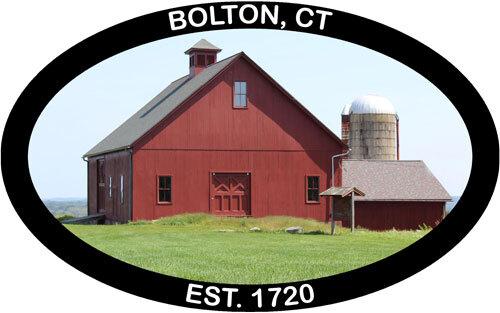Food Waste Prevention
Why should we care about food waste?
In the United States alone, 30 - 40% of our national food supply goes unconsumed and ends up in landfills. This corresponds to approximately 133 billion pounds of useable organic matter that ends up in the trash. Unfortunately, with little access to oxygen or light, once these materials enter a landfill they release methane gas instead of properly decomposing. Greenhouse gases, which include methane, have been identified as one Fof the leading causes of climate change.
Food waste poses an ever increasing strain on multiple systems within our society. A large percentage of water, energy, money, and time go into the production and distribution of our food. Ineffective food use can occur for many reasons. These reasons may include when consumers cook or buy more food than they need, or when they are unable to use the food before it spoils.
What can I do at home to prevent organic waste from ending up in a landfill?
The leading cause of food waste occurs at home in our own kitchens. Changing our shopping habits can significantly decrease our waste output and save us money in the process. To begin, set conscious goals to use up most of the food you have before going on another grocery store trip! Make organized lists of only what you need before entering the store to stay on track and limit impulse buying. Avoid buying food products in bulk, despite the temptation of a great deal. Buying more than your family needs, especially products with a short shelf life, significantly increases how many pounds of food waste your family will leave at the curb for trash pickup each week.
When storing your newly purchased groceries, read the labels to ensure you properly store different types of products to best extend their shelf life. Store fast ripening foods together separate from others to prevent premature spoilage of multiple products. Keeping an organized fridge space where all products are visible is also instrumental in limiting organic waste production. Some consumers like to leave themselves notes on their fridge to help with meal planning when expiration dates are approaching. With some planning, one meal can become the basis for the next. Lastly, leftovers can be frozen into portions to create low effort meals for a later date while preventing food waste.
As you are preparing meals, organic scraps which may not work in your next recipe can still be put to good use to aid your garden. Backyard composting is easy to learn and a great way to get your kids involved in helping the environment.
What is the difference between date labels on food?
Misunderstandings about labels is a frequent consumer concern. With many different types of food labels out there, it can be confusing to understand what exactly the product manufacturer is really indicating. Having an understanding of each label can help you make informed decisions on when to use up and discard groceries safely.
Here are some common labels you may see and their meanings:
“Sell By”: Stores use this label to indicate how long an item has been sitting on the shelves before it’s been purchased to alert them when to rotate it to the front of their shelves. It is not an indication to the consumer of an expiration date.
“Best By”: Manufacturers put this label on products to indicate the date in which the food surpasses the recommended use for full flavor or quality. It is not an indication of an expiration date, and the product is safe to consume shortly past this date as long as it has been stored properly.
“Use By”: Manufacturers place this label on packaging to indicate the last recommended date of consumption before discarding. This date is not a definitive indication that consumption after this time period is dangerous, but that some of these type of products may reach the end of their lifespan at this date and some may be at lower levels of quality.
Please note that if you encounter any signs of mold, abnormal taste, smell, or color, it is best to discard the product despite the date on the packaging.
For more information about judging when products are still safe to use, visit the FDA’s Tips to Avoid Food Waste webpage.


Composting at Home
The thought of composting at home can seem intimidating until you learn just how simple the process can be. A recent survey conducted by the Town of Bolton indicated that while 55% of community members who completed the survey do not already compost at home 68% are thinking about getting started!
A Simple Process
Compost is a dark and rich earthy soil that is created when materials high in carbon and nitrogen are layered and mixed overtime with moisture. This material is full of nutrients that are perfect for facilitating the health and growth of your plants and garden. Not only does it help encourage healthy bacteria to grow in your soil, but it also reduces the needs for fertilizers and chemicals in your yard.
Whether you make your own (see video below) or buy a ready-made composting bin on the market, make sure it’s well aerated with a tight fitting lid.
Begin by adding the following layers:
The Brown Layer: Dead leaves, small twigs, and branches make up the first layer of your bin. These materials are rich in carbon and are a great source of energy for the microorganisms.
The Green Layer: Organic food scraps from fruits and vegetables, egg shells, grass clippings, cardboard pieces, shredded newspaper, hay/straw, etc. make up the second layer. These materials are rich in nitrogen which helps cell and protein growth.
Avoid adding these items….
- Meat and Dairy Products
Bones
Diseased plant material
Plant material containing fertilizers or chemicals
Any food with oils, fats, or grease
Cat/Dog Waste
Create a balance by maintaining a ratio of 30-parts Brown to 1-part Green. You can begin your bin by adding a layer of Browns, then Greens, and alternating as you acquire more food scraps. Keeping a small container in your kitchen for this collection can be helpful.
Importance of Moisture and Mixing: Once your Browns and Greens are layered, place your bin in a shaded area near a water source. Making sure your compost is damp by periodically watering it will ensure faster decomposition. Finally, be sure to mix or stir your pile every 1 - 2 weeks for fresh compost.
With this method, you can create fresh compost in as early as 3 months to a year.
Common Misconceptions:
Won’t the smell attract unwanted animals to my yard?
When composting is done properly in the correct ratios, there should be very minimal smell to your bin. Strong smelling bins that attract wildlife are a result of too much decomposing green material and not enough brown material to counterbalance it. To avoid any persistent pests, make sure to purchase a bin with a tight fitting seal and sturdy lid. Food scraps can also be covered in dirt before being placed in the bin to eliminate any lingering odors.
Doesn’t it take a lot of time and energy to manage?
Compost bins require less maintenance than most people expect. After appropriately layering your pile, your bin only has to be mixed every 1 - 2 weeks and occasionally watered to maintain appropriate moisture levels. For every pile of food scraps you add, simply add the correct ratio of carbon rich brown material on top.
Isn’t it expensive to begin composting?
It doesn’t have to be! Trash bin composting is an easy, DIY way to begin reducing your food waste in your own backyard. By using only a 32-gallon trash can with a secure lid and a power drill, you can begin creating an effective bin at home for half the price of a commercial bin.
Watch this video below on how to get started:
For more in-depth information, please consult the following articles:
“Food Waste Reduction and Recovery” from the FDA’s Website
https://portal.ct.gov/DEEP/Reduce-Reuse-Recycle/Waste-Reduction/Food-Waste---Reduction-and-Recovery#Why
“Confused by Date Labels on Packaged Food” from the US Food & Drug Administration
https://www.fda.gov/consumers/consumer-updates/confused-date-labels-packaged-foods
“Let’s Talk Trash” by the U.S.D.A
https://www.usda.gov/media/blog/2015/10/20/how-can-we-support-affordable-nutritious-diets-reduce-wasted-food
“Composting at Home” by the EPA
https://www.epa.gov/recycle/composting-home
“Compost Chemistry” by Cornell Waste Management Institution
http://compost.css.cornell.edu/chemistry.html

